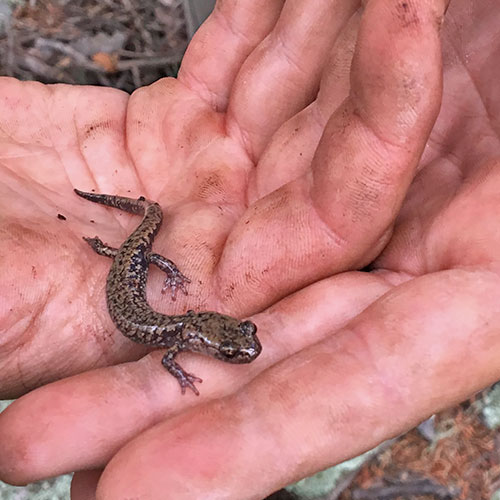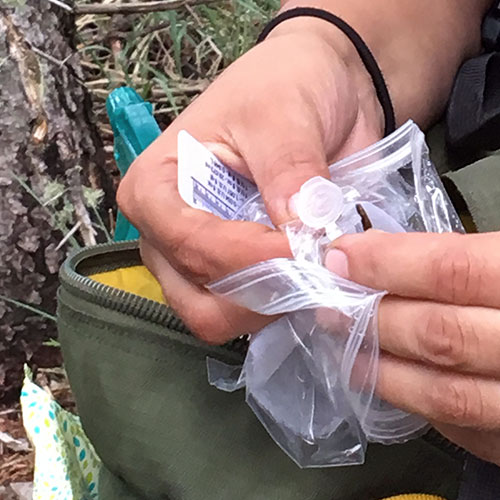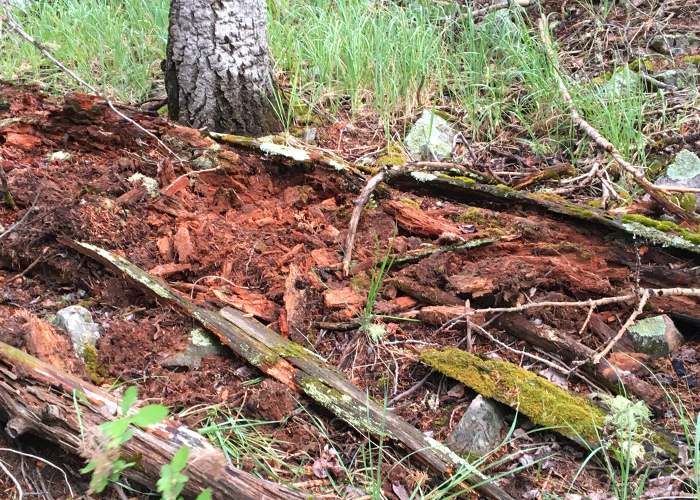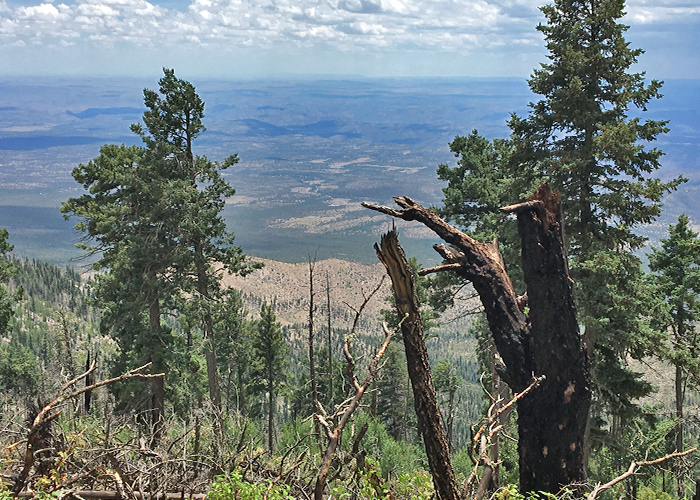There are many species that are only found in New Mexico. One such species is the Sacramento Mountain salamander (Aneides hardii), which, as its name suggests, is found in the Sacramento Mountains and other neighboring mountain ranges. The salamander stays below ground much of the year, coming up to the soil surface only when conditions are right. And it turns out, humans aren’t the only ones who like rain – especially in an arid state like New Mexico – the salamander can only be found aboveground when there has been sufficient rainfall and the soil is nice and moist.

An adult Sacramento Mountain salamander. (Ginny Seamster)

Putting a salamander tissue sample in ethanol. (Ginny Seamster)
Salamanders are quite small and only use a small geographic area. This raises the question- since salamanders are unlikely to walk from one mountain range to the next, how genetically distinct are salmanders found in different mountain ranges, and even different areas within a single mountain range? Project lead Dr. Megan Osborne and master’s student Samantha Cordova at the University of New Mexico are using Share with Wildlife funds to help address this question.

Typical salamander habitat – rotted, water-saturated logs. (Ginny Seamster)
How do you answer this question? The first step is to find salamanders in the field. This can be quite a challenge, since this salamander lives in remote areas and you can’t find them until enough rain has fallen. And, when there has been sufficient rainfall, this can mean treacherous roads that have transformed into rivers of mud. When you find a salamander (or a few as you can often find more than one under a single rock or in a single log), you take a small piece of their tail (which will grow back!) and preserve it for genetic analysis. Back in the lab, you extract the genetic material (DNA) from the tissue sample and characterize genetic diversity at different parts of the DNA. Using this information, we can figure out how diverse each population is and how different populations at distinct sites are from one another. These data can help answer other questions about the impacts that fire and other disturbances in the forest, including projected climatic changes, may have on this species and on connectivity of populations.

View from the Capitan Mountains. (Ginny Seamster)
